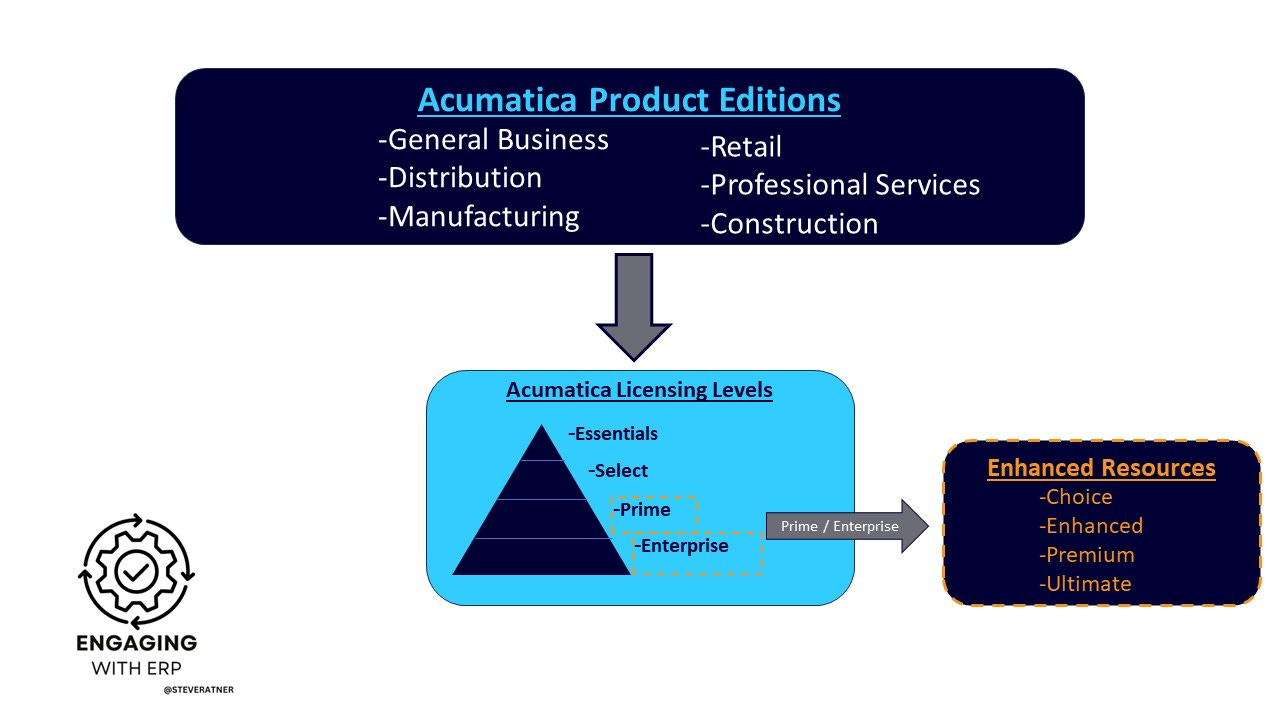ERP Pricing Models: Consumption vs. Seat-Based Pricing
Engaging with ERP is where I share my insights and expertise from over a decade of knowledge in the ERP industry. Join me for my thoughts, tips, strategies, and practical advice on all things ERP monthly.
Unlike most Enterprise Resource Planning (ERP) software, Acumatica has strictly been a consumption-based model since entering the market. In the 2010s, as Acumatica emerged as a new ERP platform, this novel pricing approach became a key selling point during sales cycles for Acumatica and the Value-Added Resellers (VARs) representing the product. Despite its longstanding presence, many still struggle to fully grasp the differences between a consumption-based model and the traditional seat-based pricing model, and how these can impact licensing costs depending on the industry.
The consumption-based model has been crucial to Acumatica's growth, positioning itself as offering "unlimited" seats within the software, a significant differentiator compared to other ERP platforms in the small to medium-sized business (SMB) space. While this is true to an extent, potential and current customers often view this as a major advantage over the traditional seat-based pricing model. With seat-based pricing, costs increase with the addition of new users, leading to higher recurring fees from the software provider. However, with advancements in automation and interconnected platforms, the focus has shifted to how much work a single licensed user can perform within an ERP system. While seat-based pricing has served software providers well for years, the shift to cloud-based solutions has underscored the advantages of consumption-based pricing for cloud software providers.
Think of consumption-based pricing like a toll highway where you pay based on the distance traveled. The more miles you drive, the more you pay. If you only travel a short distance, the fee is minimal, but a longer journey incurs higher costs due to extended usage. Similarly, with consumption-based pricing, costs are directly tied to usage. Use less, and you pay less; use more, and you pay more. This model aligns costs with actual usage, much like tolls correlate with the distance driven.
As "The Cloud ERP," Acumatica sets the pricing structure, akin to how a state determines toll fees. In April of this year, Acumatica revamped its existing consumption model to focus on Commercial Transactions Volume (CTV) instead of the previous model, which also included ERP Transactions Volume (ETV). But what’s the difference between these two metrics? CTV measures specific business transactions within your organization, such as the highest count of sales orders, customer payments, or A/R invoices processed in a month. An example would be if in each month your company processes 1000 sales orders, 700 customer payments, and 675 A/R invoices, your Commercial Transaction Volume would be 1000, as it's the highest count among these activities. Conversely, ETV tracks the frequency of creating or editing objects within the Acumatica ERP system, like new records, data modifications, report generation, automation schedules or system configuration updates.
The new licensing model introduces levels to help VARs determine the appropriate Acumatica consumption level for their clients (see my visual below):
Acumatica Essentials: For low-complexity organizations with fewer than 20 employees.
Acumatica Select: Ideal for organizations with fewer than 50 employees.
Acumatica Prime: Recommended for organizations with fewer than 200 employees.
Acumatica Enterprise: Best suited for organizations with over 200 employees.
These new levels integrate with Acumatica’s existing industry-specific editions, but consumption remains the key driver of your Acumatica level and maintenance costs. For instance, the retail edition tests these new tiers based on a business's CTV. An e-commerce business with 40 employees might fit into the Acumatica Select level based on headcount, but if they fulfill hundreds of orders daily, they might require a higher level like Prime or Enterprise due to their high CTV. This discrepancy could influence a potential customer's decision to sign up for Acumatica, especially if consumption costs push them into a more expensive tier. Incorrect level assignment or misconfiguration could lead to performance issues and cloud server latency.
Recently, Acumatica has cracked down on customers exceeding their CTV and ETV levels, ensuring they are compensated appropriately for cloud server performance and maintenance. This enforcement aims to set realistic expectations for customers and VARs, helping them choose the correct consumption level. In contrast, traditional seat-based customers never needed to consider CTV or ETV. During the sales cycle, customers should outline their annual usage peaks and valleys to ensure proper tier placement, understanding the cost differences between consumption and seat-based pricing.
Overall, the consumption model is gaining traction over traditional seat-based pricing, eliminating the need for customers to buy or maintain infrastructure and hardware. As Acumatica continues to expand its customer base and cloud capabilities, it may negotiate better rates with cloud providers, potentially passing these savings on to customers. Only time will tell.




Hi Mike, Thanks for checking out my site and for your thoughtful comment. I completely agree – Acumatica's unlimited user model is a game-changer. Thanks again for your support, and I look forward to sharing more insights with you!
Hi Steve, just found your site and looking forward to reading your content in the future. For what it is worth I think Acumatica's unlimited user model is one of the most innovative things they do. It allows for real-time, end-to-end business process automation. The whole team sings from the same sheet music and communication within the team is embedded in the actual transaction, not an email or a post-it note. Unfortunately, at least at the moment, this is lost on most management teams which is a shame. It's important and the market will eventually catch up to it, I hope, this is where competitive advantage lies in the future. Thanks again and good luck with this site!